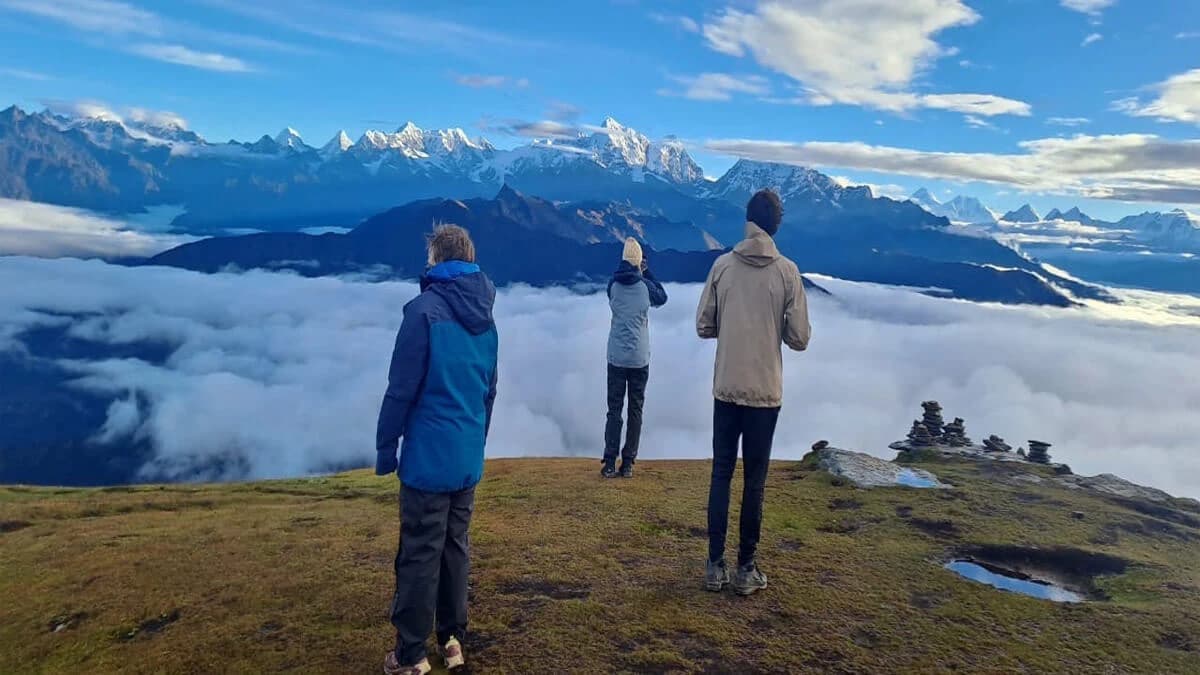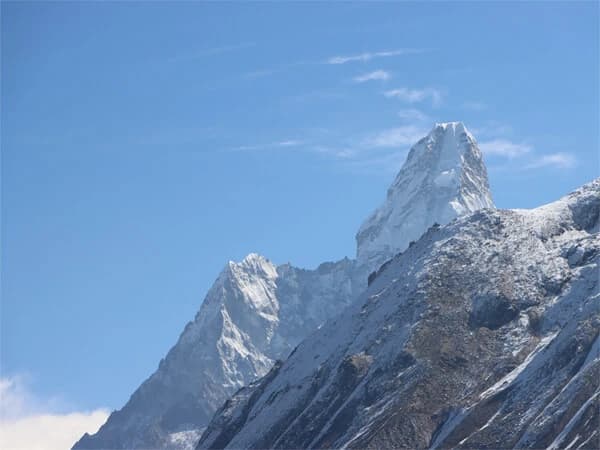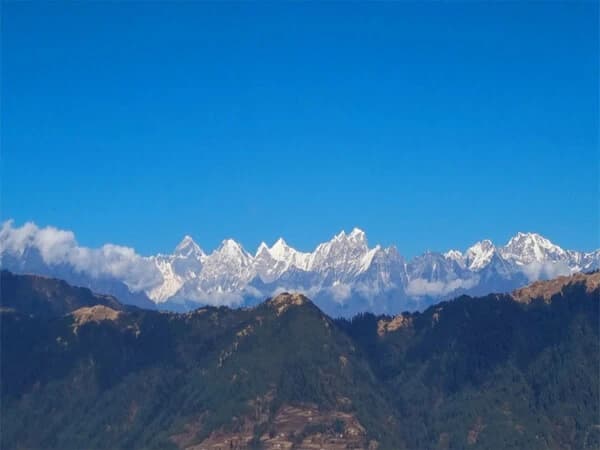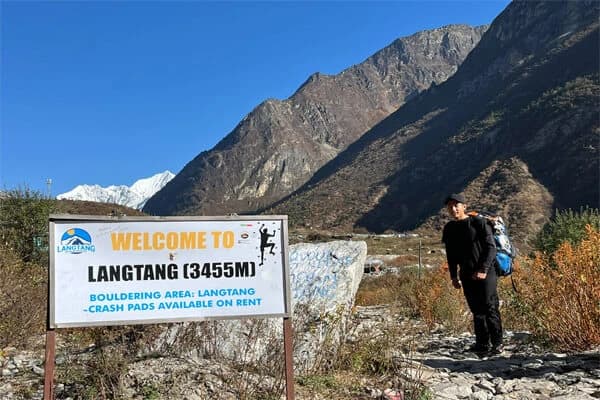The moderate 6- to 8-day Pikey Peak Trek in Nepal's Solu area offers a blend of cultural encounters and scenic views. Trekkers begin at Dhap or Phaplu and travel through tranquil monasteries, rich rhododendron forests, and charming Sherpa settlements like Jhapre and Junbesi. The sunrise from Pikey Peak, which offers stunning views of Makalu, Kanchenjunga, and Everest, is the highlight. Beginners with a modest level of fitness can complete the trek, and lodging is available in nearby teahouses. Treks might be short or long thanks to flexible itineraries. Pikey Peak delivers a once-in-a-lifetime Himalayan experience with local support, the right permits, and planning.
Pikey Peak Trek Itinerary
Pikey Peak Trek is one of Nepal's least known yet stunning trekking routes. It is situated in the Lower Solu portion of the Everest region. This trek provides the ideal balance of serene pathways away from the busy Everest Base Camp route, natural beauty, and cultural diversity. Pikey Peak, which stands at 4,065 meters, is renowned for providing one of the most sweeping views of Mount Everest and other magnificent peaks, including Annapurna, Makalu, Lhotse, and Kanchenjunga. The first Everest climber, Sir Edmund Hillary, even said that his best Everest view was from Pikey Peak.
Traditional Sherpa communities, historic monasteries, Buddhist stupas, rhododendron forests, and rolling green slopes are all part of the journey. Additionally, you can stay in welcoming teahouses run by local families, taste real mountain cuisine, and experience the Sherpa way of life. Pikey Peak's shorter duration and low difficulty make it the perfect choice for beginners, nature enthusiasts, and anyone looking for a tranquil Himalayan experience.
To help you plan your Pikey Peak Trek with ease and confidence, we will guide you through the detailed itinerary, trail highlights, expenses, challenges, and helpful hints in this blog.
How to Reach the Starting Point of the Pikey Peak Trek
Pikey Peak Trek from Kathmandu
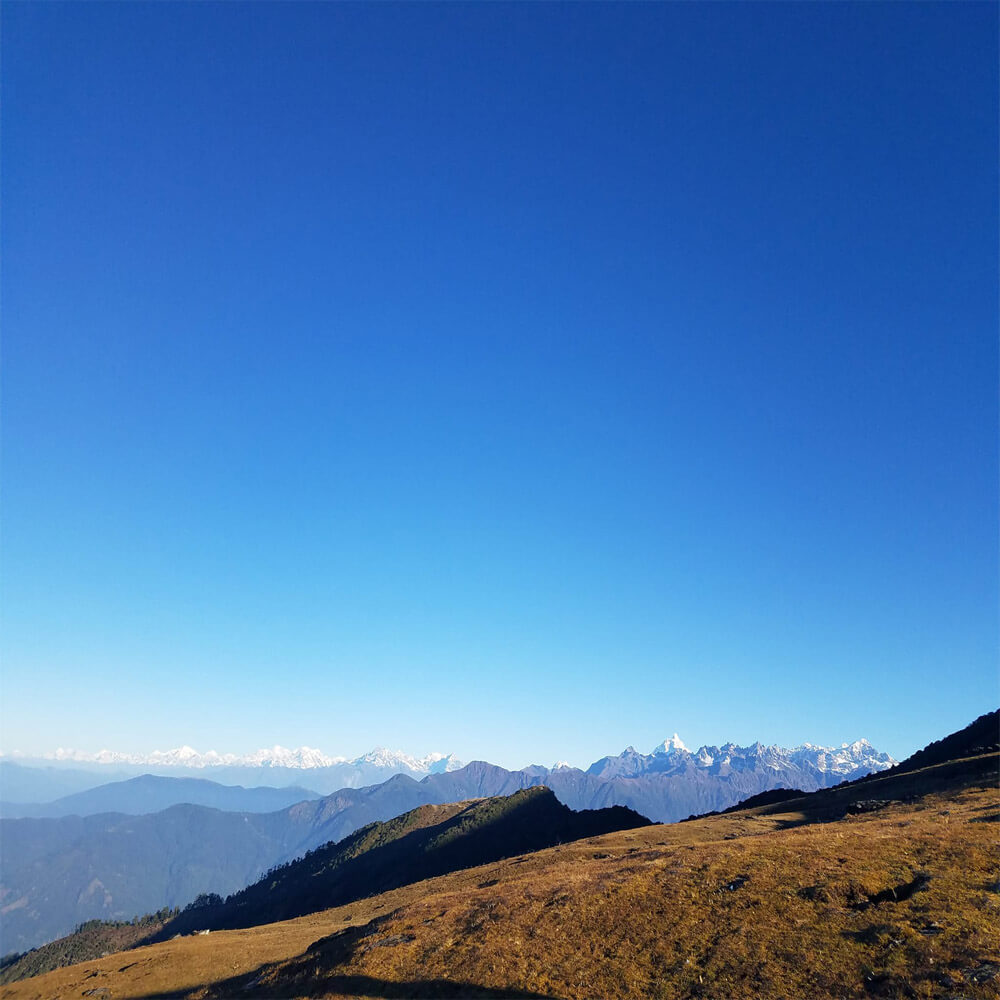
From Kathmandu, the majority of trekkers start their journey with a picturesque drive. For most itineraries, the Pikey Peak trek begins and ends at Dhap, which is roughly 8 to 9 hours away by car from Kathmandu. The trip offers stunning views of hills, rivers, and towns as it travels through Dhulikhel, Khurkot, and Ghurmi. Although the roads can be uneven in some places, passengers can choose to take a local bus for a less expensive option or a private jeep for luxury.
An additional choice is to take a 30- to 35-minute flight from Kathmandu to Phaplu Airport, after which you can trek or take a jeep ride to Dhap or Jhapre for two to three hours. For trekkers on a somewhat greater budget but with less time, this is perfect.
Pikey Peak Trek Start and End Point
- Starting Point: Dhap (2,850m) or occasionally Jhapre, a tiny Sherpa village, is where most itineraries begin.
- Ending Point: Trekkers typically fly or drive back to Kathmandu from Phaplu, when the journey comes to a close.
Some itineraries start in Phaplu and finish in Dhap, following the same route in reverse. Others continue their journey to Dudh Kunda or Junbesi before heading back. Depending on the route and speed, the Pikey Peak trek distance and duration span 50–65 km over 5–7 days.
Things to Consider Before Traveling
- In contrast to Lukla, Phaplu does not require special flight permits.
- During the monsoon season, roads may be muddy or dusty.
- Private jeeps are advised for convenience and adaptability.
If you visit monasteries like Thupten Chholing or cultural villages like Junbesi, the overall Pikey Peak trek distance and duration may increase.
The experience begins with getting to the starting place. The Pikey Peak trek from Kathmandu is well-connected and provides a seamless start to a serene and picturesque Himalayan vacation, regardless of whether you decide to drive or fly.
Pikey Peak Trek Route Map
The Pikey Peak Trek route starts from Dhap or Phaplu, winding through charming Sherpa villages like Jhapre and Junbesi, passing rhododendron forests and monasteries, before reaching Pikey Base Camp. Trekkers trek to Pikey Peak for panoramic Himalayan views, then descend via Junbesi back to Phaplu or Dhap, completing the loop.
Pikey Peak Trek Route Overview
A lesser-traveled trekking route in Nepal's Solu area, the Pikey Peak Trek offers the ideal fusion of scenic beauty, cultural encounters, and expansive Himalayan vistas. The trek is perfect for a 6–8 day itinerary because it usually begins in Dhap or Phaplu and returns to the same location. Trekkers may experience the genuine Himalayan way of life on the Pikey Peak Trek, which, in contrast to well-known treks like Everest Base Camp, travels through serene Sherpa communities, beautiful forests, and open meadows. Trekkers can witness breathtaking sunrise views of Everest, Kanchenjunga, Makalu, and Lhotse from Pikey Peak itself, which is located along the path. With its gentle paths, reasonable heights, and beautiful vistas, the walk is appropriate for both novice and experienced trekkers.
Pikey Peak Trek Map with Distance
The entire trek covers approximately 55–65 kilometers round trip, depending on the chosen route and any side excursions. A standard trekking route looks like this:
- Kathmandu to Dhap/Phaplu: 5–7 hours by jeep or a short domestic flight to Phaplu.
- Dhap to Jhapre: 10–12 km, roughly 4–5 hours trek. This section gradually ascends through lush rhododendron forests and small Sherpa settlements.
- Jhapre to Pikey Base Camp: 12–14 km, 5–6 hours trek. The trail becomes steeper here, passing yak pastures and small monasteries.
- Pikey Base Camp to Pikey Peak: 3–4 km, 1–2 hours trek. This short but rewarding climb offers panoramic mountain views at sunrise.
- Pikey Peak to Junbesi: 10–12 km, 4–5 hours trek. Descending through open meadows and traditional Sherpa villages.
- Junbesi to Phaplu: 12–15 km, 5–6 hours. The trail passes the Thupten Chholing Monastery and terraced farmland before reaching the endpoint.
- Return to Kathmandu: 5–7 hours drive or flight.
The route is flexible and can be shortened or extended depending on time, fitness, and interests. Side treks to nearby viewpoints or monasteries add an extra 2–3 km each.
Pikey Peak Trekking Route Details
From Kathmandu, the journey starts with a picturesque drive or flight to Dhap or Phaplu. The trail then gradually climbs through a mix of open spaces and wooded areas. Trekkers can acclimate and experience village life on the first day of the modest walk to Jhapre. Trekkers begin to experience the Himalayan altitude as the terrain steepens and they reach Pikey Base Camp the next day. Pikey Peak is a relatively short summit walk that rewards trekkers with expansive views of the main Himalayan peaks but demands early morning exertion to catch the sunrise.
The journey descends toward Junbesi, a peaceful Sherpa settlement with traditional teahouses, from the peak. Trekkers see the rich Sherpa culture along this path, frequently seeing monasteries, chortens, and prayer flags. The last portion to Phaplu gently descends back to lower elevations after passing through woodlands and terraced farms. All things considered, the Pikey Peak trekking path is one of the most fulfilling short treks in Nepal since it blends a reasonable level of difficulty with cultural immersion, scenic beauty, and breathtaking Himalayan views.
Pikey Peak Trek Itinerary Overview
Understanding the Route
The typical itinerary for a Pikey Peak trekking package takes a picturesque path that progressively ascends to Pikey Peak via serene woods, traditional Sherpa settlements, and high hills. From Kathmandu, most itineraries start with a lengthy drive or quick flight to Dhap or Phaplu. After passing through towns like Jhapre, trekkers arrive at Pikey Base Camp and begin the early morning climb to the top. After witnessing the sunrise from the summit, the walk frequently continues in a circuit-like fashion toward Junbesi and Phaplu.
Pikey Peak Altitude and Acclimatization
In this trip, the height of Pikey Peak and the acclimatization procedure are crucial. Pikey Peak is a moderately altituded peak at about 4,065 meters. The increasing altitude necessitates cautious pacing even though this climb is shorter and easier than Everest Base Camp. Trekkers will gradually ascend from lower communities at 2,800–3,600 meters before reaching the summit thanks to the plan. This steady increase lowers the chance of altitude sickness and aids in the body's natural adjustment. Simple but efficient acclimatization strategies for the trek include drinking plenty of water, walking slowly, and abstaining from alcohol.
Flow of the Pikey Peak Trekking Package Itinerary
Even though most people finish the walk in 6–7 days, most travel plans follow a same general rhythm. Trekkers start at the trailhead, travel through Jhapre, remain close to the base camp, ascend Pikey Peak for a glimpse of the sunrise, stop by cultural villages like Junbesi, and then head back to Phaplu or Dhap. For further adventure and cultural immersion, some itineraries go to monasteries like Thupten Chholing or continue on toward Dudh Kunda.
Why This Itinerary Works Well
The schedule for the Pikey Peak trekking tour is suitable for both beginner and expert trekkers. It is brief yet worthwhile, combining rich Sherpa culture with views of the Everest, Makalu, Kanchenjunga, and Numbur Himal mountains. It is safe and fun because of the steady elevation climb, strategically located overnight stops, and cozy teahouses. The trek’s structure gives enough time for adaptation, which supports the Pikey Peak altitude and acclimatization process while allowing trekkers to enjoy nature without rushing.
Alternative Itineraries for Pikey Peak Trek
Short trek to Pikey Peak– 5 Days
Trekkers with limited time can finish a condensed version of the Pikey Peak trek in roughly five days. Usually beginning with a flight or car trip to Phaplu, this itinerary proceeds straight to Pikey Base Camp and Junbesi. It mostly concentrates on getting to Pikey Peak's viewpoint in time for sunrise, eschewing lengthy cultural stops. For trekkers who wish to see Everest, Ama Dablam, and Kanchenjunga without spending many days on the path, this is the ideal choice.
Pikey Peak Trek Itinerary 7 Days
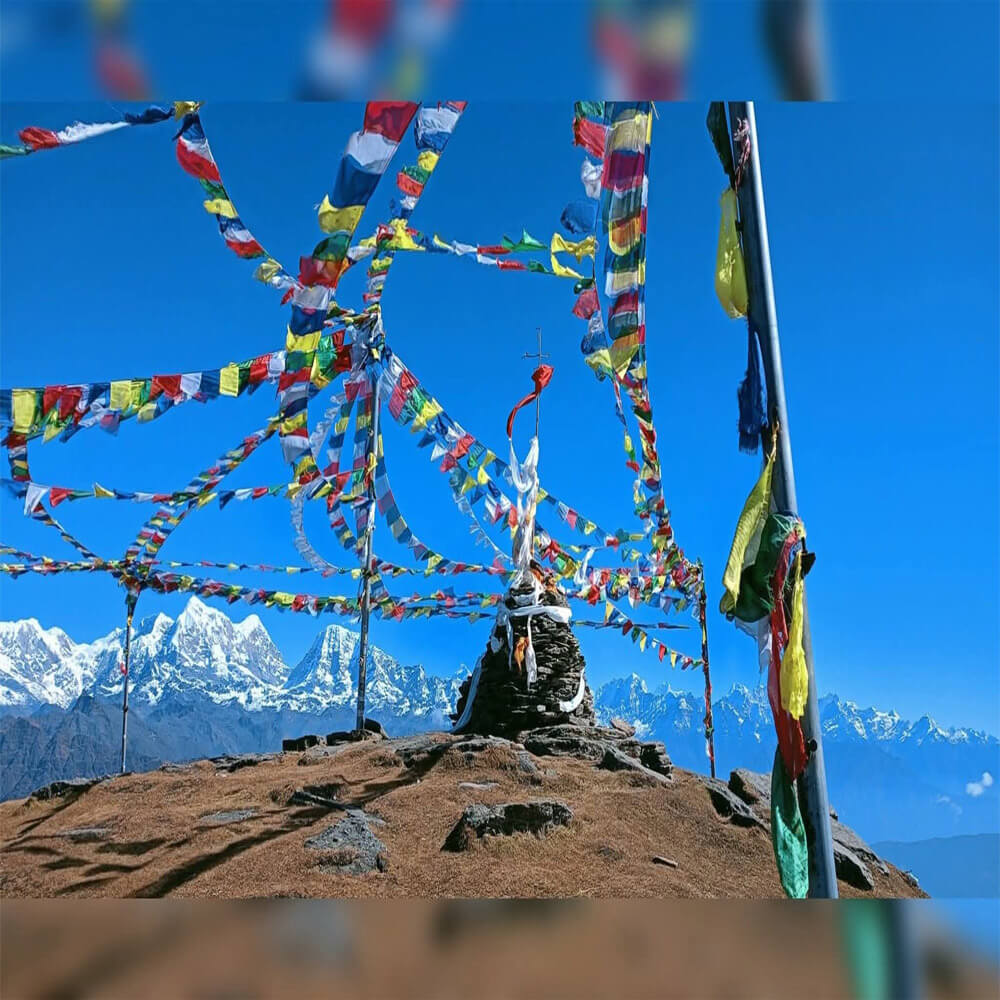
One of the most well-liked and well-rounded choices is the 7-day Pikey Peak trek itinerary. Trekkers have ample time to take in the picturesque rhododendron and pine forests, Buddhist monasteries, and nearby Sherpa communities. This path is safer and more comfortable for novices because it permits slower ascents than the shorter itinerary. While still making it to Pikey Peak for the well-known sunrise view, it allows time for cultural immersion in towns like Jhapre and Junbesi. For those looking for a week-long journey that combines culture and environment, this schedule is perfect.
Pikey Peak Trek 9 Days Itinerary
The Pikey Peak Trek 9 Days Itinerary is a more leisurely and enhanced option for tourists seeking a more in-depth experience. This lengthier path allows for additional days to visit nearby schools, walk to vistas overlooking the Everest region, or discover hidden monasteries like Thupten Chholing. Additionally, trekkers might choose to continue on into the holy pilgrimage site of Dudh Kunda Lake or join paths that lead to the Everest region. The nine-day schedule enables more connection with local Sherpa tribes, more flexibility in walking hours, and improved acclimatization. Photographers, leisurely trekkers, and anyone else who appreciates tranquil, non-hurried trekking will find it perfect.
Custom and Family-Friendly Itineraries
Trekkers of all ages, including families and novices, can modify the journey by cutting down on walking hours or adding rest days. You can also change the mode of transportation, such driving from Kathmandu both ways or taking a one-way flight to Phaplu. The trek is appropriate for a range of travel styles and fitness levels because to its adaptable itinerary.
Pikey Peak trek highlights and viewpoints
Stunning Everest Panorama from Pikey Peak
Trekkers prefer the Pikey Peak Everest view trek in large part because of the breathtaking sunrise view from the top of Pikey Peak (4,065m). Many Himalayan giants, such as Mount Everest, Lhotse, Makalu, Kanchenjunga, and even Annapurna, are visible on a clear morning. According to Sir Edmund Hillary, his favorite view in all of Nepal is the one from Pikey Peak. Most trekkers never forget the moment they saw the first golden light touch Everest.
Scenic Trails Through Forests and Yak Pastures
The path on the Pikey Peak itinerary from Phaplu winds through serene yak pastures, pine forests, and lovely rhododendron forests. Rhododendrons blossom in the spring, illuminating the forests, and fall brings clear mountain views and azure skies. The ride will be serene and picturesque as you pass by little bridges, prayer flags hanging, and stone-paved pathways.
Authentic Sherpa Villages and Culture
The Pikey Peak Everest view trek provides a peaceful cultural experience in contrast to more popular trekking routes. Sherpa families continue to live traditional lives in villages like Jhapre and Junbesi. Old monasteries, prayer wheels, mani walls, and vibrant prayer flags that wave in the breeze are all visible. Warm tea houses, amiable locals, and traditional dishes like Tibetan bread and dal bhat add significance to the trip.
Monasteries and Spiritual Sites
The Pikey Peak itinerary from Phaplu includes stops at historic Buddhist locations such as the little gompas in Jhapre and the Thupten Chholing Monastery at Junbesi. Butter lights, serene courtyards, and monks reciting prayers give the journey a spiritual feel. These monasteries also provide information about Sherpa customs and Tibetan Buddhism.
Mountain Sunrise and Photography Spots
One of Nepal's top locations for photography is the vantage point atop Pikey Peak. In order to reach the top in time for sunrise, trekkers frequently begin their ascent early in the morning. The mountains glow in pink and gold hues as the clouds hover under the peaks. The Pikey Peak Everest view trek offers picture-perfect views at every turn, regardless of whether you have a smartphone or a high-end camera.
Accommodation and Meals
Types of Accommodation on the Pikey Peak Trek
The majority of trekkers travel along the Pikey Peak trek daily schedule and stay in traditional teahouses owned and operated by Sherpa families. These lodges provide simple yet cozy accommodations with common facilities, twin beds, and blankets. They are comfortable and warm, but do not anticipate luxury. There are hardly many teahouses in bigger villages like Junbesi and Jhapre that provide private rooms with bathrooms. It is advisable to have a sleeping bag, particularly at Pikey Base Camp where the temperature may drop.
A Pikey Peak trek guide and porter will book your accommodations in advance if you are traveling with them. This is useful during the busiest trekking seasons when lodges fill up quickly.
Meals: What You Can Eat on the Trek
Designed to provide you with energy for your Pikey Peak daily schedule, the meals are straightforward but substantial. The most popular and limitless cuisine among trekkers is Dal Bhat, which consists of rice, lentil soup, and veggies. Noodles, pasta, fried rice, Tibetan bread, pancakes, eggs, and soups are also available. Some teahouses serve Sherpa stew or momos (dumplings).
All lodges include bottled or boiled water, coffee, ginger lemon honey tea, and hot tea. Bring snacks like energy biscuits, chocolate bars, or nuts if you want variety. Your porter and Pikey Peak trek guide can assist in suggesting sanitary food options and sources of potable water.
Facilities: Electricity, Charging, Wi-Fi, and Showers
Most communities have electricity, however it is frequently more expensive to charge your phone or camera. Higher elevations frequently use solar electricity. Larger settlements like Junbesi have Wi-Fi, although the connection is sluggish and occasionally unstable.
Hot showers, typically powered by solar energy or gas, are provided for a nominal cost. Showers could not be available at higher elevations, like as Pikey Base Camp, because of water limitations or frigid weather. Wet wipes are a nice backup to have on hand.
Why a Guide and Porter Make It Easier
Making reservations for a Pikey Peak trek guide and porter guarantees more convenient lodging and dining plans. While the porter handles your bulky bags, the guide assists with language, food ordering, and assessing sanitary levels. This enables you to get enough sleep and maintain your energy levels during your daily Pikey Peak trekking plan.
Pikey Peak Trek Difficulty Level and Preparation
Because of its moderate Pikey Peak trek difficulty level, most beginners with a respectable level of fitness may complete it. It provides enough difficulty to satisfy adventurers and trekking fans, even though it does not reach the extreme elevations of Everest Base Camp. The journey offers a satisfying blend of physical exertion and natural beauty with its steady upward routes, modest elevation increase, and steep sections.
Fitness Level Required
The trek is not technically challenging, but it does require a high amount of stamina. Walking on rough paths can take four to seven hours per day. Trekkers should be able to handle long walking days and steep ascents. Before the trip, leg-strength exercises, trekking practice, and basic cardio preparation can help the experience go much more smoothly.
Pikey Peak Trek Elevation Gain
With Pikey Peak standing at 4,065 meters (13,340 feet) above sea level, the overall Pikey Peak trek elevation gain is moderate. Trekkers begin at Dhap, which is around 2,000 meters above sea level, and progressively climb via picturesque villages and wooded paths. Gradual acclimation is possible due to the average daily elevation gain of 300–600 meters. Altitude sickness is less likely with this modest climb, but trekkers should still exercise caution and take their time.
Altitude Considerations
Although Pikey Peak is not very high, the trek passes through regions that are higher than 3,500 meters. Altitude sickness can cause mild symptoms like headaches, exhaustion, and shortness of breath. Drink plenty of water, move slowly, and pay attention to your body. To further lower danger, some itineraries include acclimation days at Phaplu or Junbesi.
Trail Conditions
It is a combination of forest tracks, stone steps, and dirt lanes. Careful footing is necessary for certain steep ascents and descents, particularly after rain or in the early morning when the trails may be slick. For comfort and safety, layered clothes, walking poles, and comfortable trekking shoes are necessary.
Best Time for Pikey Peak Trek
Because of the consistent weather, mild temperatures, and good visibility for mountain views, the Pikey Peak journey is easier to manage in the spring (March–May) and fall (September–November) seasons. Because of the chilly weather and possibly snow on the trail, winter treks are feasible but more difficult.
Trekkers can make better plans, get physically ready, and enjoy the trip without excessive stress by knowing the elevation gain and general difficulty level of the Pikey Peak trek. This walk offers Sherpa culture, amazing morning views, and a rewarding adventure for trekkers of all skill levels if they prepare properly.
Permits and Costs for Pikey Peak Trek
Knowing the permits, transportation, and daily costs is essential while organizing your Pikey Peak trek. This section provides you with all the information you require regarding the Pikey Peak trek cost and itinerary so that you can make an informed budget.
Required Permits
A few necessary licenses are required in order to trek in the Pikey Peak area:
All trekkers in Nepal are required to have a TIMS Card (Trekkers’ Information Management System). In isolated areas, it aids in tracking trekkers and ensuring safety.
Solu-Khumbu Restricted Area permission: Pikey Peak requires a restricted area permission because it is located in the lower Solu region. You can get this permit from your trekking agency or in Kathmandu.
Local Area Entry Permits: Your trekking package may include the small local permits needed in some of the settlements along the route.
Permits typically cost between USD 30 and USD 50 per person.
Transportation Costs
Whether you decide to drive or fly to the trailhead will determine your mode of transportation:
Depending on the type of vehicle, the drive from Kathmandu to Dhap takes around 10 to 12 hours by jeep or private vehicle and costs between USD 70 and USD 120 per person.
Flight to Phaplu: An alternate option is a 35–45 minute scenic flight, which costs USD 120–150 one way. In addition to saving trekking days, flights offer breathtaking Himalayan overhead vistas.
Flying cuts the Pikey Peak trek cost and itinerary by one or two days, therefore your mode of transportation has a direct impact.
Accommodation and Food Costs
Teahouses are the main lodging option along the route:
Teahouse rooms: A simple room usually costs between $5 and $10 per night. Costs may be higher for private rooms with attached bathrooms.
Meals: The basic dish, Dal Bhat, which consists of rice, lentils, and veggies, costs about USD 5–7 each meal. Instant noodles, tea, coffee, and snacks are a little less expensive.
For a comfortable vacation, it is customary to budget USD 20 to USD 25 per day for food and lodging.
Guide and Porter Costs During Pikey Peak Trekking
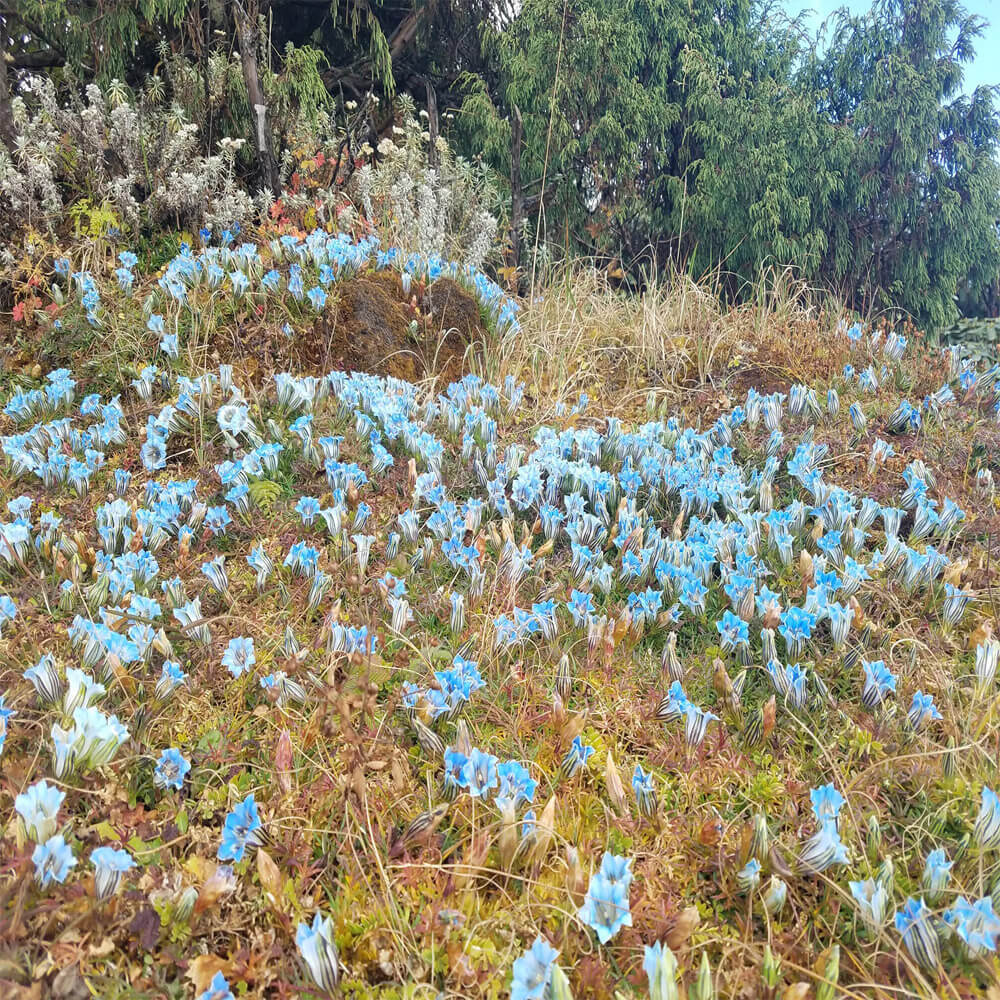
Although not required, hiring a native guide or porter is advised for safety, direction, and cultural understanding:
Guide: $25 to $30 per day.
Porter: About $15 to $20 each day, which makes it easier for you to carry bulky bags so you may enjoy the trek more.
You can improve your experience without significantly raising the expense and schedule of your Pikey Peak trip by hiring guides or porters.
Total Estimated Cost
The approximate cost per person for a 6- to 7-day Pikey Peak expedition could range from USD 350 to USD 700, depending on your preferences and degree of comfort.
With the help of this cost summary, you can effectively plan your trek and enjoy the full Pikey Peak trek cost and itinerary experience while striking a balance between adventure, culture, and money.
Tips for a Better Pikey Peak Trekking Experience
1. Acclimatization is Key
Pikey Peak rises to more than 4,000 meters, yet it is not as high as Everest Base Camp. You can give your body more time to acclimate to the altitude by staying longer at stations like Jhapre or Junbesi. Rather than hurrying uphill, take brief walks in the morning or evening. Drink plenty of water and avoid alcohol to lessen the risk of altitude sickness. It is more crucial to pace yourself and pay attention to your body than it is to travel great distances every day.
2. Plan Around the Best Weather
Spring (March–May) and Autumn (September–November) are the best times of year to go trekking. Clear skies, vivid rhododendron blossoms, and sharp mountain views are all available throughout these months. Steer clear of the rainy season (June to August), when landslides are frequent and routes can get muddy. Because of the snow and the cold temperatures at night, winter treks are feasible but require bulky, warm equipment. You can choose the ideal trekking times for sunrise or sunset at Pikey Peak by consulting the weather prediction both before and during the climb.
3. Respect Local Culture
Pikey Peak trek travels through monasteries and communities in Sherpa. Dress decently and always get permission before entering houses or monasteries. Refrain from disturbing prayer rituals or touching sacred objects. Saying "Namaste" to natives is a great way to express respect. Purchasing regional handicrafts or trinkets from tiny stores promotes ethical travel and helps the community.
4. Pack Smart and Light
Bring only the necessities for a comfortable trek. A strong pair of trekking shoes, warm layers, rain jacket, trekking poles, and a small daypack are must-haves. Keep snacks, personal medications, and a reusable water bottle with you. Even though teahouses serve meals, it can be useful to pack energy bars or quick drinks for extended stays. Choose lightweight gear and multipurpose clothing instead than overpacking, which slows you down and causes needless strain.
5. Capture the Moments
Pikey Peak is well-known for its expansive morning views of Makalu, Kanchenjunga, and Everest. Keep a power bank, extra batteries, and a camera or smartphone with you. The best light comes in the early morning or late afternoon. Always get permission before taking pictures of villages or monasteries out of respect for the locals. Travel images that are memorable can be as easy as capturing prayer flags flying against the Himalayan backdrop.
6. Safety and Preparedness
Keep yourself updated on mobile coverage regions and let someone know your route. It is safer to walk in small groups or in pairs. Keep an eye out for weather changes and path markings. You should bring a basic first aid kit, a headlamp, and trekking insurance. On remote trails, small measures can keep minor problems from becoming big ones.
By following these guidelines, you may make sure that your trek up Pikey Peak is memorable, safe, and respectful of the local Sherpa culture and environment.
FAQs
1. What is the best time to do the Pikey Peak Trek?
The ideal seasons are spring (March–May) and autumn (September–November). During these months, the skies are clear, offering stunning mountain views, comfortable trekking temperatures, and vibrant rhododendron blooms in spring. Winter is cold, and monsoon brings heavy rainfall and slippery trails.
2. How long does the Pikey Peak Trek take?
A standard itinerary takes 6–7 days, starting from Dhap or Phaplu and returning via Junbesi. Shorter 5-day options are possible for trekkers with limited time, while extended 8-day routes allow for cultural exploration and side trips.
3. What is the difficulty level of the trek?
The trek is moderate. It’s suitable for beginners with basic fitness, as the highest point, Pikey Peak, is 4,065 meters. Daily walking ranges from 4–6 hours, with gradual ascents and descents.
4. Are guides or porters necessary?
While not mandatory, hiring a local guide is recommended for safety, navigation, and cultural insights. Porters can be hired to carry heavy luggage, making the trek more comfortable.
5. What permits are required?
Trekking requires a local Solu-Khumbu permit. TIMS may be necessary if combined with other regions. Permits are easily obtainable through local trekking agencies or at district offices.
Conclusion: Pikey Peak Trek Itinerary
Both beginner and experienced trekkers looking for a less crowded option to Everest Base Camp will find the Pikey Peak Trek to be the perfect combination of natural beauty, cultural diversity, and a manageable trekking difficulty. With its picturesque Sherpa villages and tranquil monasteries, the trail immerses you in Himalayan customs and local life at every turn. Long after the climb is over, the breathtaking sunrise vista from Pikey Peak, which shows off towering peaks like Everest, Kanchenjunga, and Makalu, will remain in your memory. This trek offers accessible routes and varied itineraries, allowing visitors to take their time exploring the Himalayas. Your Pikey Peak expedition will be genuinely unforgettable if you plan your trek with a reputable local organization, Nepal Trekking Routes, which guarantees safety, direction, and a smooth travel.

